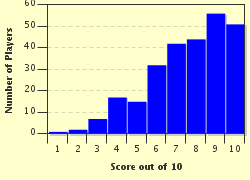Quiz Answer Key and Fun Facts
1. 1756 saw American colonist, Lydia Taft, becoming the first woman to achieve which remarkable decision making act in an area hitherto only allowed to men?
2. One hates to gossip, but in 1762 Ann Franklin became the first American woman to take control of which business?
3. In 1779, Margaret Corbin became the first American woman to receive a pension from George Washington for which service to the nation?
4. In 1848, Maria Mitchell became the first American woman elected to the American Academy of Arts and Sciences. What was the specialism that earned her this honour?
5. In 1853, Antoinette Brown Blackwell became the first woman in America to be formally qualified for which ethereal profession?
6. 1869 saw Arabella Mansfield become the first American woman to achieve which benchmark distinction in Iowa?
7. In 1876, Louise Blanchard Bethune became the first American woman to work in which visually appealing field?
8. 1887 saw Phoebe Couzins become the first American woman to work in which arresting profession?
9. 1880 rolled around to see American attorney Belva Lockwood take dramatic centre stage where?
10. In 1900, Margaret Abbott became an inaugural American winner of which green Olympic event?
Source: Author
Creedy
This quiz was reviewed by FunTrivia editor
bloomsby before going online.
Any errors found in FunTrivia content are routinely corrected through our feedback system.

